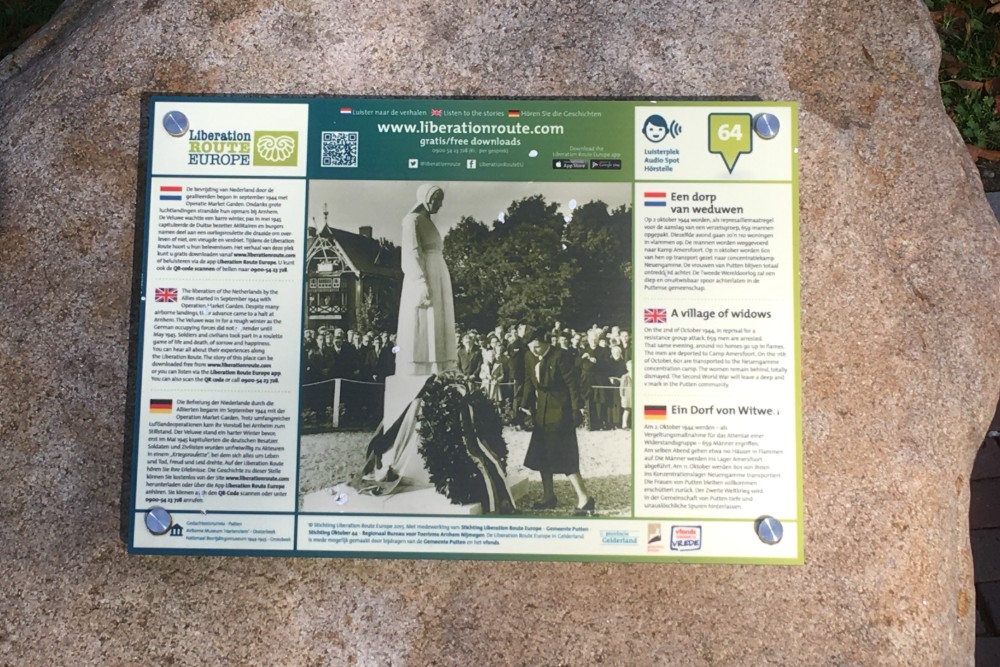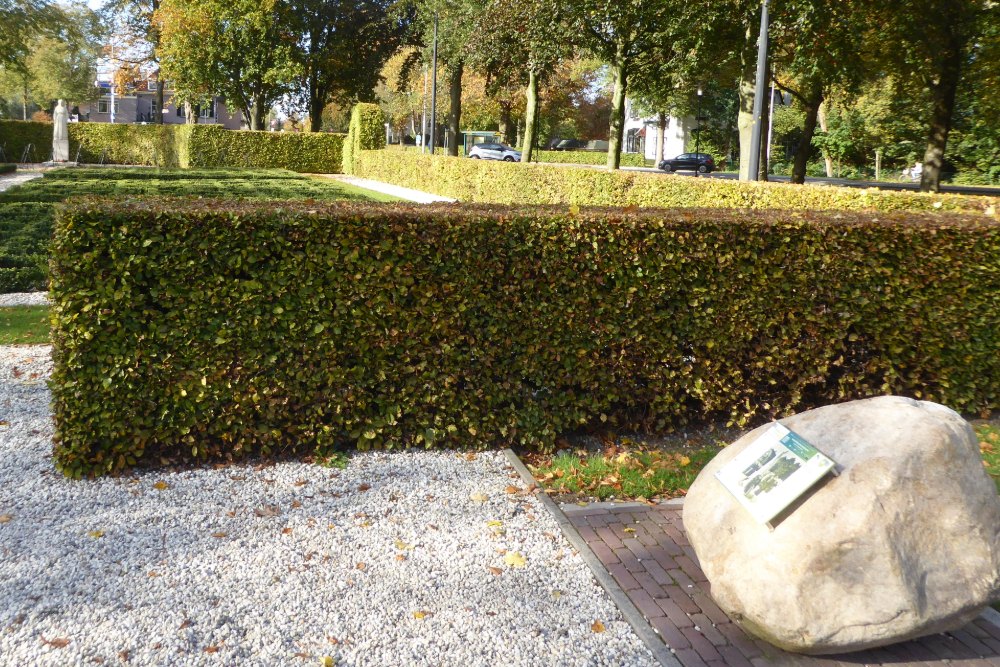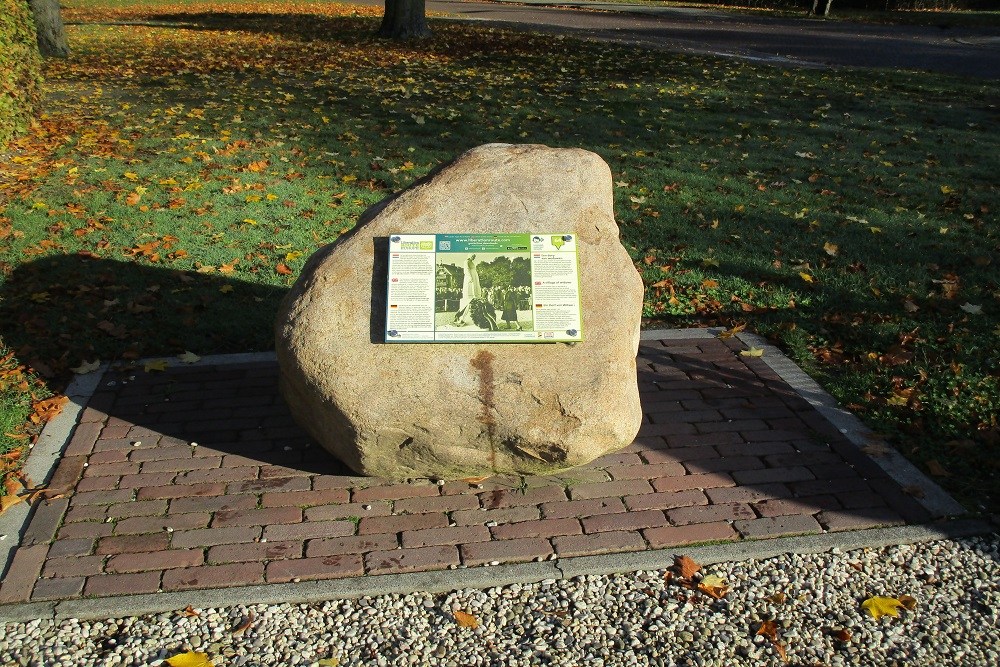Liberation Route Marker 064: A village of widows
A village of widows
On the 2nd of October 1944, in reprisal for a resistance group attack, 659 men are arrested. That same evening, about 110 homes go up in flames. The men are deported to Camp Amersfoort. On the 11th of October, 601 of them are transported to the Neuengamme concentration camp. Thirteen men jump off the train and escape. The total death toll from the round-up and the deportation therefore amounts to 552. The Putten women are totally horrified. The Second World War will leave a deep and indelible mark in the community of Putten.
On the 2nd of October 1944, in reprisal for a resistance group attack, 659 men are arrested and taken to Camp Amersfoort. 601 of them are transported to the Neuengamme concentration camp. The women and children have to leave Putten that same day before five o'clock. Not long after, part of Putten is ablaze and about a hundred houses are in ashes. Many families cannot go home.
The brave and steadfast people of Putten help each other through tough times. From the Netherlands and even abroad, aid is given. Collections are held everywhere. On the 18th of April 1945, the Canadians liberate Putten. Eventually only 48 men return, of whom five still die. On the 1st of October 1949, Queen Juliana unveils a monument commemorating the victims of the round-up. "The Woman of Putten", the widow with handkerchief, looks off in the direction of the Oude Kerk from where the men were taken away.
Audiospot - A village of widows
Liberation Route Europe is a certified Cultural Route of the Council of Europe. With hundreds of sites and stories in nine European countries, the route links the main regions along the advance of the Allied Forces in 1943-1945.
The entire route consists of themed routes that can be travelled by by hiking, walking, cycling and car. These routes pass numerous historical and interesting sites and tell stories from a multitude of perspectives that were important in the final phase of World War II.
Many routes feature listening spots, offering the opportunity to listen to a historical story at a location. In addition, many ‘Vectors of Memory’ have been placed, indicating that the passer-by is on one of the Liberation Routes.
The routes can be found on the Liberation Route Europe website or in the app through which many stories can also be listened to.
Do you have more information about this location? Inform us!
Source
- Text: TracesOfWar & Liberation Route Europe
- Photos: Willem Visser (1, 2), Dick de Bruijne (3)
Nearby
Museum
- Commemoration Room for the Putten Raid - Putten
- 0.1 km
- Remembrance Center Northwest Veluwe '40-'45 - Harderwijk
- 9.0 km
Point of interest
- Bomb-crater Volenbekerweg - Putten
- 1.9 km
- Bomb-crater Oud Groevenbeek - Ermelo
- 2.9 km
- Positions Riebroekseweg - Ermelo
- 3.6 km
Monument
- Memorial of the Putten Raid - Putten
- 0.0 km
- War Memorial General Cemetery Putten - Putten
- 0.4 km
- Liberation Route Marker 063: The raid - Putten
- 0.6 km
Cemetery
- Dutch War Graves General Cemetery Putten - Putten
- 0.4 km
- Commonwealth War Graves General Cemetery Putten - Putten
- 0.4 km
- Dutch War Grave Roman Catholic Cemetery Putten - Putten
- 0.6 km
Remembrance Stone
- Stumbling Stones Stationsstraat 82 - Putten
- 1.0 km
- Stumbling Stones Grieteweg 10 - Putten
- 1.3 km
- Stumbling Stones Harderwijkerstraat 91 - Putten
- 1.6 km







